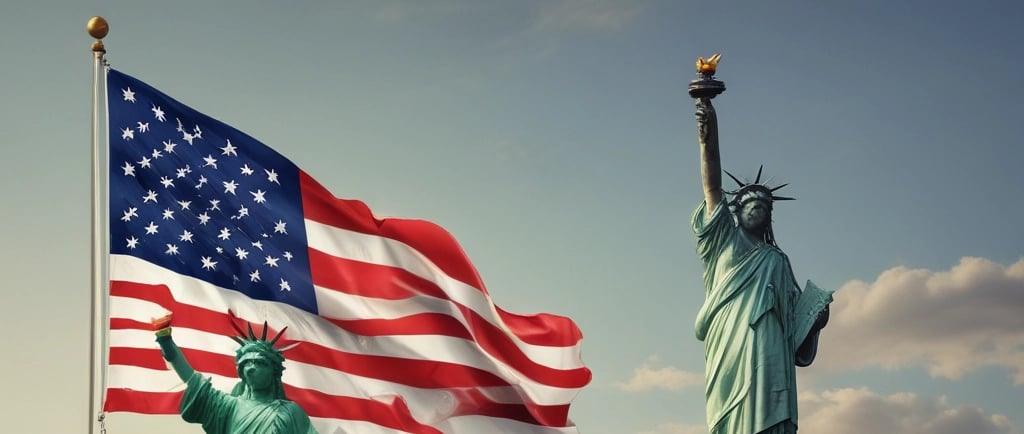China and USA Price War: Recent Updates in 2025
Stay updated on the U.S.-China price war, with new tariff reductions and their impact on Indian exporters. Learn how these trade tensions affect global markets, trade finance, and strategies for navigating volatility.
INTERNATIONAL TRADE
6/2/20253 min read


Source: In May 2025, the U.S. and China agreed to reduce tariffs from 145% to 30% and 125% to 10%, respectively, for 90 days to ease trade war tensions (Source: Reuters, May 13, 2025).
Content:
The U.S.-China trade war, reignited under the U.S. in 2025, continues to disrupt global trade, with tariffs driving significant economic shifts. In April 2025, the U.S. imposed 145% tariffs on $200B of Chinese imports, targeting electronics, textiles, and steel, while China retaliated with 125% tariffs on $100B of U.S. goods, including agriculture and energy products, affecting $440B in bilateral trade (Source: Reuters, April 10, 2025). A May 2025 Geneva agreement temporarily reduced U.S. tariffs to 30% and Chinese tariffs to 10%, pausing the escalation for 90 days until August 2025. However, unresolved issues, such as China’s restrictions on rare earth exports (e.g., gallium, germanium), critical for semiconductors, keep markets tense.Impact on Indian Exporters:
Opportunities:
U.S. firms are diversifying supply chains, boosting India’s textile and pharmaceutical exports by 12% ($1.5B) in Q1 2025, per India’s Ministry of Commerce.
India’s exports to the U.S. hit a record $86.51B in FY24–25, up 35% in March 2025 due to front-loaded shipments before tariffs.
Sectors like electronics and seafood may gain market share as China faces 30% U.S. tariffs compared to India’s 26% (paused for 90 days).
Challenges:
Shipping Costs: Rerouting via Singapore and Dubai has increased costs by 15% ($0.8B annually), squeezing margins.
Chinese Dumping: Chinese firms, unable to export to the U.S., may flood India with cheap goods, depressing prices. Chemical exports ($2.9B to the U.S. in FY24) face a 10% price drop risk.
Dependency on China: India relies on China for 70% of active pharmaceutical ingredients (APIs) and 30% of auto parts, risking $1.2B in cost increases if disrupted.
Current Trade Figures:
U.S.-China Trade: Direct trade fell 90% ($410B to $40B) in H1 2025 due to tariffs, with indirect exports via Southeast Asia dropping from $124B to $84B.
India-U.S. Trade: India’s exports to the U.S. reached $86.51B in FY24–25, with a $37B trade surplus. Imports from China hit $113.45B, up 25%, worsening India’s $99.2B trade deficit with China.
Global Trade: The WTO projects a 0.2% decline in world merchandise trade volume for 2025, driven by tariff disruptions.
Effects on Indian Trade:
Positive:
India’s engineering exports face a potential $4–5B drop due to U.S. tariffs on steel and auto parts, but textiles and electronics may offset losses by capturing 5% of China’s U.S. market share ($2B).
A U.S.-India trade deal, targeting $500B in two-way trade by 2030, could reduce India’s tariffs from 26% to 10%, boosting exports.
Negative:
Indian chemical exporters face margin pressures as Chinese firms target markets like Brazil and the UAE, reducing prices by 8–12%.
A 27% U.S. tariff on Indian goods (if resumed post-truce) could impact $13B in exports, particularly auto parts ($1–5B).
India’s stock market lost $180B in two days post-tariff announcements, with the rupee weakening 3% against the USD.
Strategies for Indian Exporters:
Trade Finance: Use UCP 600-compliant letters of credit to secure U.S. payments, reducing default risks by 90%. ECGC insurance covers $50B in exports, mitigating non-payment losses.
Compliance: File accurate Shipping Bills via ICEGATE under the Customs Act, 1962, to avoid fines up to ₹10 lakh. Claim Section 74 duty drawbacks (5–10% savings).
Risk Mitigation: Hedge forex risks with RBI-approved forward contracts (3–5% savings). Use INR vostro accounts (adopted by 18 countries) to cut USD volatility losses by 5–7%.
Diversification: Target markets like the EU and Middle East, where India’s exports grew 10% ($3B) in FY24–25.
Training: Join our Udemy courses or live sessions to master trade finance, FEMA compliance, and tariff strategies.
Conclusion:
The U.S.-China tariff truce offers Indian exporters a window to capitalize on supply chain shifts, but risks like Chinese dumping and cost increases loom. By leveraging trade finance tools and diversifying markets, India can navigate this trade war and sustain export growth.

Astan Finserv Consultancy Services
Export Consultation, Export and Customs Documentation, Duty drawback and Indian Govt Export Schemes and Export Trainings.
© 2025. All rights reserved.